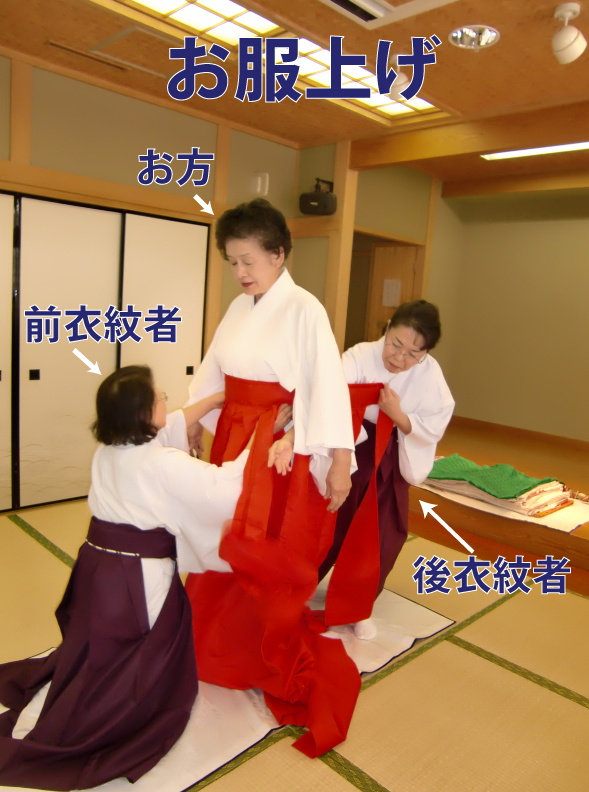In the winter of 2014, Mary Ohno traveled to Tokyo, Japan. On December 19, she had the priviledge to model Juuni-Hitoe. Juuni-Hitoe requires very special dressers, who must rehearse the kitsuke for Juuni-Hitoe periodically.
The dressers who artfully assembled this elegant ensemble were:
Madame Ayako Nakayama, Ms Keiko Oda, and Ms Yumiko Tanaka.
Madame Ayako Nakayama is instructing this E-mon-do (衣紋道) at Takakura School (高倉流)
Ms. Keiko Oda and Ms Yumiko Tanaka are studying under Madame Ayako Nakayama in this school.
* O-Fuku-Age (お服上げ)— Juuni Hitoe Dressing
* O-Kata (お方) — the person wearing Juuni-Hitoe
* Mae-E-Monja (前衣紋者)—the dresser, sitting in front of O-kata
* Ushiro-E-Monja (後衣紋者)—the dresser, standing behind O-kata



The History of Juuni-Hitoe
The juunihitoe (十二単) is an extremely elegant and highly complex kimono that was only worn by court-ladies in Japan. Literally translated, it means “twelve-layer robe”. The juuni hitoe started to appear around the 10th century during the Heian Era. The innermost garment is made of white silk, followed by other layers of silk which have various names, and then finally closed off by a final layer or coat. The total weight could add up to 44 pounds.
The colors and the arrangements of the layers are very important. The arrangements of the layers and their colours were a good indication to any outsider what taste and what rank the lady had. Apart from their robes, Japanese court ladies also wore their hair very long, only cut at the sides of their faces in a layered fashion; the longer hair was sometimes worn tied back.
An important accessory was an elaborate fan, which could be tied together by a rope when folded. This was used by the lady not only to cool herself, but it was also an important communication device.

Today the juuni hitoe can only be seen in museums, in movies, or at certain festivals. These robes are priceless and are one of the most expensive items of Japanese clothing. Only the Imperial Household still uses them at some important functions. During the wedding of Masako, Crown Princess of Japan to the crown prince, she wore a juunihitoe for the official ceremony. The juunihitoe was also worn by Empress Michiko during the enthronement ceremony of Emperor Akihito in 1990. Her ladies-in-waiting were all wearing the jūnihitoe, however in modified form from the Edo period, not the Heian style.
The Saiō Matsuri Saiō Festival is held every in Meiwa, Mie and showcases Heian era dresses. They are also featured at the Aoi Matsuri in Kyoto.





Comments are closed